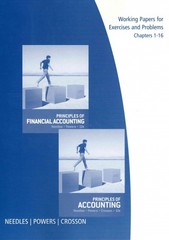Question
Two firms selling the external keyboards compete in price of their product.Set set of players is N={1,2}.The firms are choosing price simultaneously.Firm i {1,2} chooses
Two firms selling the external keyboards compete in price of their product.Set set of players is N={1,2}.The firms are choosing price simultaneously.Firm i {1,2} chooses price iAi for each unit, where Ai={10,15,20}.Each firm has associated cost ci associated with selling each unit.There is Q= 1000 of potential customerseach of who wants to buy exactly one external keyboard.The firm that chooses the lower price wins the market, in other terms if pi< pj (i, jN, i j), then the firmisells qi=Q units and the other firm sells qj= 0; and if pi=pj, then qi=qj=Q/2. Firm's profit equals to u(pi, pi) = (pici)qi(pi;pi).(Note that since there are only two players in this game,pi represents the price of the other player j i).Assume that each firm is a profit maximizer (the utility each firm maximizes is equal to its profit).
(a) Suppose c1=c2= 10.Represent the game by a payoff matrix and find all the pure-strategy Nash Equilibria in it.
(b) Suppose c1= 5 and c2= 15 (firm 1 is able to produce more efficiently).Representthegamebyapayoffmatrixandfindallthepure-strategyNash Equilibria in it.
(c) Suppose that c1=c2= 10 as in (a), but the consumers get indeci-sive whenever p1=p2, and they don't buy from either of the firms as a result (q1=q2=0).Representthe game by a payoffmatrixand find all the purestrategy Nash Equilibria in it.
Step by Step Solution
There are 3 Steps involved in it
Step: 1

Get Instant Access to Expert-Tailored Solutions
See step-by-step solutions with expert insights and AI powered tools for academic success
Step: 2

Step: 3

Ace Your Homework with AI
Get the answers you need in no time with our AI-driven, step-by-step assistance
Get Started


